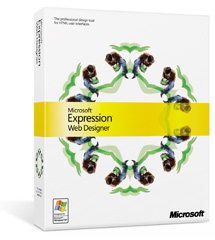The new link between designer and developer


One of the things I talked with Wayne about was the renewed focus within Microsoft on enhancing the designer/developer workflow. The idea of a "good" experience has never been as mainstream as it is now, and that is part of the appeal of Rich Internet Applications. We now have the tools to bring that kind of rich experience to the web. We can have the sophistication of the desktop and the power of the web. But as experience becomes more important, the roles of designers and developers become increasingly closer, sometimes overlapping.
Just as the RIA has blurred the line between the web and the desktop, it is doing the same to the line between designers and developersAdobe has a very strong designer history, and between their Creative Suite and Macromedia's Studio, designers can create some world class experiences. Microsoft on the other hand has traditionally been all about developers and their tools. Visual Studio is largely regarded as one of the best developer IDEs on the market. Now, as both of these companies move into Rich Internet Applications, they find themselves trying to woo the other side.
The key here is going to be the workflow between designers and developers and making sure that the tools support both types of content creators. Creating world class RIAs simply will not be possible without an efficient workflow between the two areas. Adobe has focused a lot on incorporating Adobe and Macromedia products, making sure that designers can easily move between both companies software. But they haven't quite perfected the designer/developer workflow, and I think Microsoft has a bit of a head start here. The Expression Suite seems built from the ground up to work well with their developer tools. The question will be whether or not designers will use these new tools.
In the past, designers and developers have been able to coexist with relative autonomy. But just as the RIA has blurred the line between the web and the desktop, it is doing the same to the line between designers and developers. Experience is more important than ever, and even the best developer in the world needs the design touch to make his dream a reality. That's why the designer-developer link is so important.